8 Non-Surgical Solutions for Eliminating Deep Wrinkles
We all know that aging is inevitable and wrinkles are natural. But if you’re part of the many that dread the formation of deep wrinkles, there are many ways to address them. This article will talk about the 8 non-surgical ways to get rid of deep wrinkles.
What are Wrinkles?
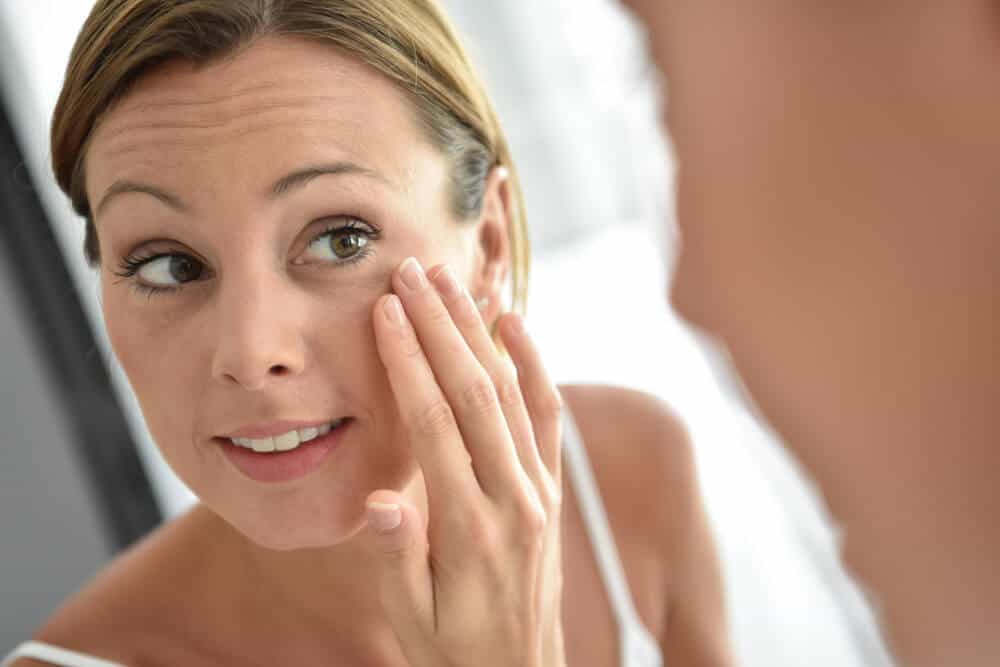
Wrinkles are creases that form in your skin from a variety of factors, such as aging or sun damage.
Wrinkles are a natural part of the aging process and tend to manifest when the skin loses elasticity. They often show up on areas of skin that receive the most sun exposure, such as the face and neck and the back of the hands.
How Do Wrinkles Form?
As we get older, our skin naturally loses elasticity and becomes drier, which makes it harder for it to ward off damage. Add to that the loss of fat that occurs as we mature, and facial wrinkles become more pronounced.
Repetitive facial movements, such as smiling, frowning, and squinting, can also form wrinkles in our skin. These can show up as lip lines, glabellar lines (or “elevens”), and laugh lines, among others.
Our lifestyles can affect the development of wrinkles, too. Smoking and heavy drinking have a direct impact on our bodies, and our skin is no different. Smoking can accelerate the aging process, and drinking dehydrates the skin, which leads to more pronounced wrinkles. A life out in the sun won’t do you any favors, either, as the sun’s rays break down the collagen and elastin in the deeper layers of the skin. If you can’t help but catch the sun’s rays, make sure you’re wearing a sunscreen everyday (we mean it).
It’s never too late to make healthier decisions for the sake of your skin. But if you’ve got a few deep wrinkles that are bothering you, here’s how to tackle them.
Retinoids
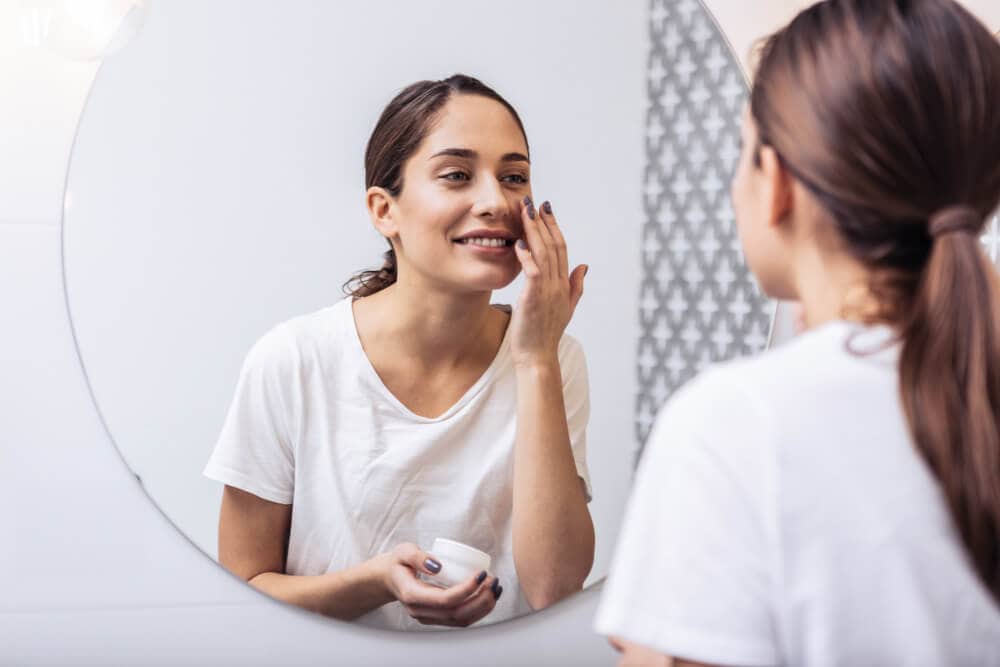
Retinoids are the gold-standard when it comes to anti-aging ingredients. A derivative of vitamin A, retinoids work by stimulating cell turnover and increasing collagen production, which can reduce the appearance of wrinkles. Not only that, retinoids can also fade age spots, reverse sun damage, and improve skin texture, resulting in a fresher, younger-looking complexion. Retinoids come in the form of prescription products, such as tretinoin or tazarotene, or in over-the-counter products in the form of retinol.
How to use retinoids:
Retinoids are all-around crowd-pleasers, but there is a caveat: they’re extremely potent, which means they can cause irritation, dryness, redness, and flaking, especially when used incorrectly. It’s important to introduce retinoids to your skin slowly, which means using it only two to three times a week. After a few weeks, add another day of usage, and so on, until you reach daily use (if your skin can handle it). You could also try a technique called buffering, which means mixing your retinoid with a moisturizer to reduce its strength. Always use retinoids at night and follow up with a good moisturizer. If you use a retinoid, you must use a sunscreen, as retinoids make your skin more sensitive to the sun.
Be patient:
It can take six months to a year to see major results from using a retinoid. If you’ve been using a retinoid for a few months with no luck, keep at it. If it’s been a year with no results, talk to your dermatologist about increasing your dosage.
Vitamin C
Another superstar when it comes to anti-aging, vitamin C is a potent antioxidant that neutralizes free radicals and boosts collagen production, which in turn reduces the appearance of wrinkles. As a bonus, vitamin C is also great at protecting the skin from sun damage, which causes fine lines and deep wrinkles. It also tackles hyperpigmentation, acne scars, dullness, and enlarged pores. Combine it with a good sunscreen and your skin will be set to fight premature aging.
Here’s how to incorporate vitamin C in your routine:
When it comes to vitamin c, you’ll want to look for a potent serum to make the most out of the ingredient. Look for products containing ascorbic acid at a concentration of around 15%, which is the percentage at which it’s most effective. Make sure it’s in an opaque or dark glass bottle to prevent oxidation. Apply your vitamin C serum to dry skin before continuing on with the rest of your skincare routine. Start slowly with this ingredient, too, and gradually increase your usage as your skin builds up tolerance. When using actives such as vitamin C, always make sure to wear sunscreen.
Chemical Peels
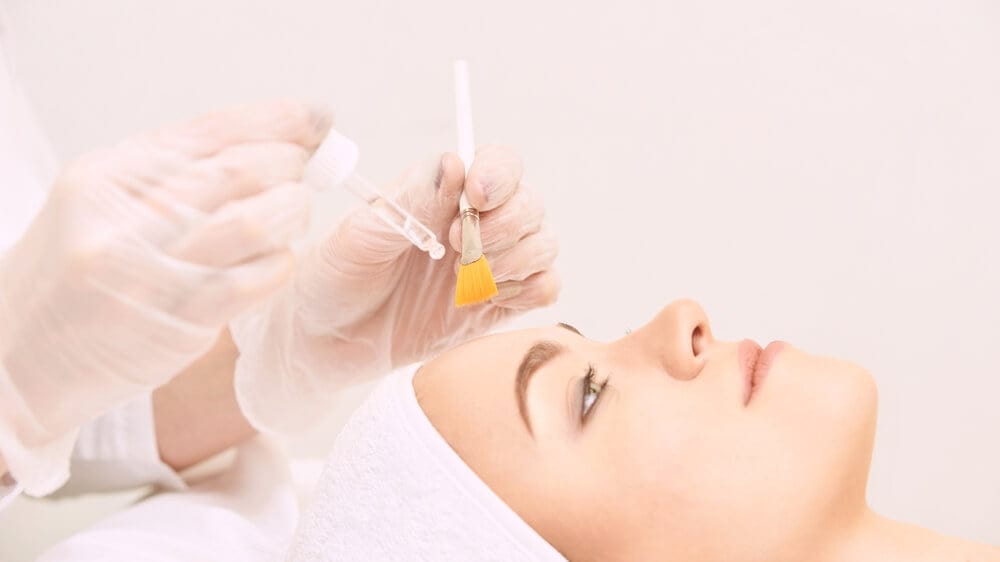
Chemical peels work by exfoliating the outer layer of skin. After applying the procedure, the skin will peel off (hence the name), revealing smoother, less-wrinkled skin underneath. Chemical peels vary in strength and can use a combination of different acids, such as glycolic acid, lactic acid, and salicylic acid. They also target fine lines, enlarged pores, acne scars, and age spots.
Here are some examples of chemical peels for deep wrinkles:
Micropeel Plus 20 Solution
This peel is perfect for those struggling with fine lines and deep wrinkles. It works by removing the top layer of skin to reveal smooth, healthy skin underneath. The Micropeel Plus 20 Solution uses 20% salicylic acid, glycolic acid, and alcohol which penetrate and exfoliate the epidermis and upper layers of the dermis. It also targets uneven skin tone, acne and acne scarring, and dullness.
The Perfect Derma Peel uses a combination of the powerful antioxidant Glutathione and acids such as TCA, retinoic acid, salicylic acid, and kojic acid to remove the top layers of the skin. The result is smoother, brighter skin with less visible fine lines and wrinkles.
Botox
When it comes to wrinkles, most of us think of Botox as both a first-line treatment and preventative measure. Botox is made up of various forms of botulinum toxin, which, when injected into a muscle, prevents it from contracting. This in turn softens wrinkles and creases.
Botox doesn’t work for all wrinkles, though…
When it comes to dynamic wrinkles, or the wrinkles caused by repetitive muscle movements such as smiling, frowning, or squinting, Botox is a great fix. Botox can be used to smoothen crow’s feet, forehead lines, smile lines, and more. Static wrinkles, on the other hand, are caused by sun damage, smoking, and the general loss of collagen and elasticity from the skin. Botox won’t have much of an effect on these types of wrinkles.
What is it like to get Botox?
The procedure is quite simple: the Botox provider will use a needle to inject Botox into a specific muscle. Some providers will apply topical anaesthesia before injecting it with Botox. It should only take a few minutes with only minimal discomfort.
Who can get Botox?
Anyone who’s bothered by the appearance of dynamic wrinkles can get Botox. There’s no “right age” to start getting Botox. You can also get Botox as a preventative measure to prevent wrinkles from forming at all.
What are the side effects?
Botox injections are relatively safe. Like anything, however, they come with risks. Some mild side effects include pain or bruising at the site of injection, droopy eyelids, a crooked smile, drooling, headache, or flu-like symptoms.
Dermal Fillers
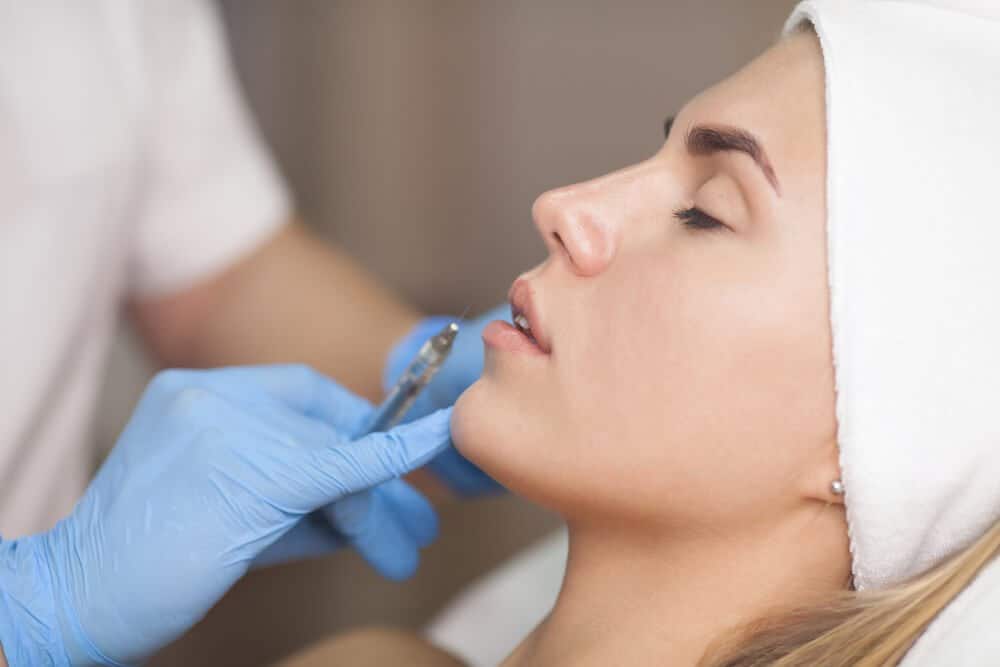
Dermal fillers are gel-like substances that are injected into the skin to smooth out wrinkles. Dermal fillers are great for wrinkles caused by the loss of volume in the face. They can restore lost volume and plump up the face for a more youthful appearance. Unlike Botox, dermal fillers can be used to smoothen out static wrinkles caused by the loss of collagen, elasticity, and fat, as well as gravity and sun damage.
Types of dermal fillers:
- Hyaluronic Acid: A substance that naturally occurs in the skin, hyaluronic acid helps cells retain moisture, resulting in healthy, plump skin.
- Calcium Hydroxylapatite: Calcium hydroxylapatite is a substance that naturally occurs in our bones. This type of filler is great for deep wrinkles and lost volume.
- Poly-L-Lactic Acid: A biocompatible, biodegradable synthetic substance, Poly-L-Lactic Acid smooth lines and creases by helping the skin naturally rebuild collagen.
- Polymethylmethacrylate: A more permanent solution to wrinkles, polymethylmethacrylate is a biocompatible synthetic substance that remains under the skin in the form of a tiny ball or “microsphere” to provide support and structure.
Hyaluronic acid fillers, though, are the most popular as they are great for any skin type, deliver fast results, and can be easily reversed. If a person is unhappy with their hyaluronic acid filler, it can be dissolved using a hyaluronidase injection.
Microneedling
Also known as collagen induction therapy, microneedling is a procedure that uses small needles to prick the skin. This works to boost collagen production, reducing the appearance of wrinkles and improving the skin’s overall texture. Microneedling also helps with acne scarring, hyperpigmentation, rough skin, and enlarged pores.
What to expect during a microneedling procedure:
A topical anaesthetic will be applied to the skin. A tool tipped with small needles will then be used over the skin to create micro-punctures, which will trigger the body to produce more collagen and elastin. At this point, your skin might bleed a bit. A serum might then be applied to the skin.
Can you do microneedling at home?
You may have noticed the rising popularity of do-it-yourself microneedling devices. Our advice? Don’t use them. Not only are they less effective, but you also risk damaging or infecting your skin. When it comes to microneedling, it’s best to leave it to professionals for the best (and the safest) results.
Fraxel Laser Treatment
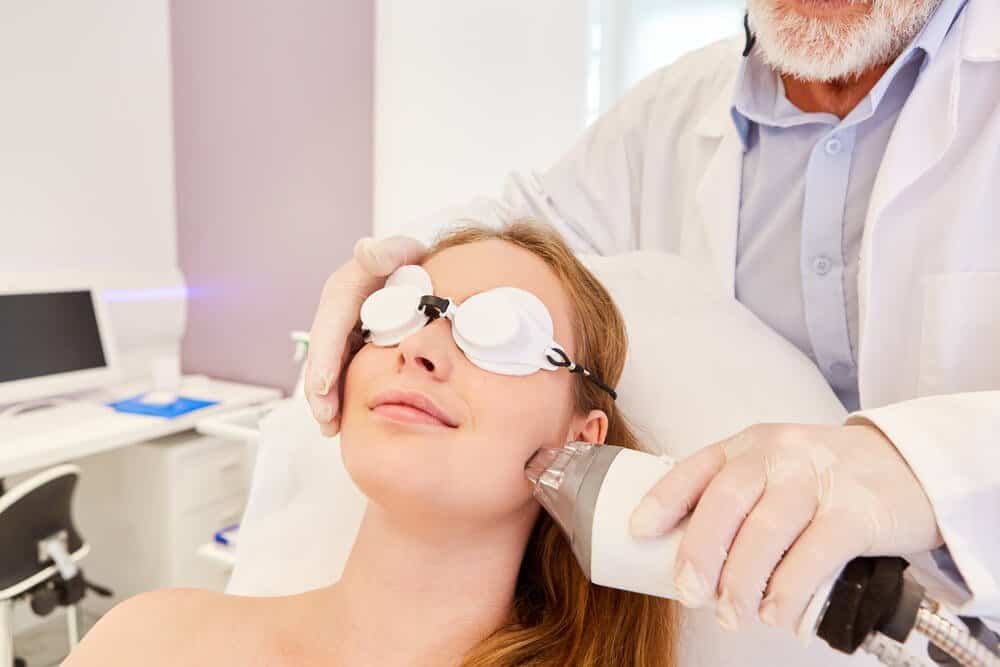
A go-to treatment for fine lines and wrinkles, Fraxel is a microscopic laser that penetrates the skin to boost the skin’s collagen and elastin production. Fraxel also treats sun damage, hyperpigmentation, and acne scarring. Fraxel works by creating micro-injuries in the skin that stimulate the growth of collagen and elastin.
Does Fraxel Laser Treatment require downtime?
One of the main reasons why Fraxel is so popular is because it requires minimal downtime. Expect around a week (more or less) of downtime. Your skin will first become red and swollen before starting to flake and peel. It’s important not to pick and pull at the flakes, or else you risk scarring your skin.
Don’t expect immediate results, though…
For deep wrinkles, you might be disappointed to find out that you need around three to five sessions, spaced around four weeks apart, to completely target them. Fraxel isn’t cheap, either, and could cost around $1500 per session.
Radiofrequency Treatments
Radiofrequency treatments use low-energy radiation to heat the dermis, which stimulates collagen and elastin production and reduces the appearance of fine lines, wrinkles, and sagging skin. Because radiofrequency only targets the dermis without damaging the top layer, there’s no downtime after the procedure, although the skin might be a little red. After the treatment, your skin will begin to produce new collagen, resulting in firmer, tighter skin.
Here’s an example of a radiofrequency treatment:
eMatrix Sublative Rejuvenation
An FDA-cleared treatment, eMatrix Sublative Rejuvenation uses bi-polar radiofrequency to penetrate the skin and boost collagen and elastin production and stimulate cell growth, improving the appearance of wrinkles, skin texture, and hyperpigmentation. Effects can be seen only five days after the treatment. The procedure takes only 30 minutes, and the results last two to five months.
8 Non-Surgical Ways to Get Rid of Deep Wrinkles
Sun damage, or photoaging, is one of the main causes of premature aging, which leads to fine lines and deep wrinkles. While you can’t stop aging, you can prevent the premature aging caused by sun damage.
It’s never too late to start adding an SPF to your skincare routine. The most expensive, effective treatments won’t matter if you’re not using a sunscreen to protect your skin. Most of the treatments listed above make the skin more sensitive to the sun, making it even more important to shield your skin from the sun’s rays. Make sure you’re using a sunscreen with an SPF of at least 30, and applying about half a teaspoon’s worth of sunscreen to your face, rain or shine. Your skin (and your future self) will thank you.
This article covered everything about the 8 non-surgical ways to get rid of deep wrinkles.
Book a consultion online now? Visit the Plantation Med Spa now to treat yourself to some of our many services and treatment offers! Call us at (954) 595-2607



